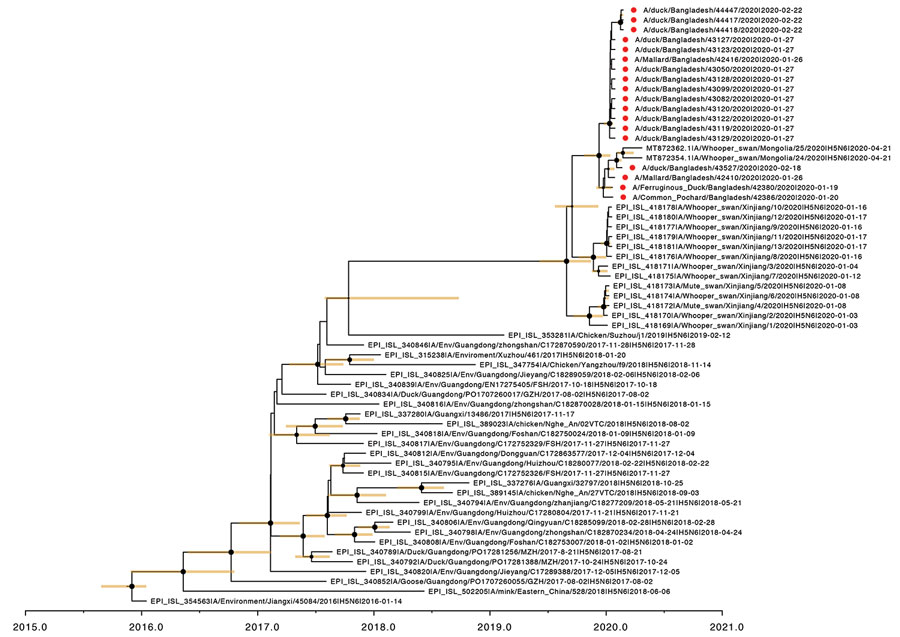Volume 27, Number 9—September 2021
Dispatch
Highly Pathogenic Avian Influenza A(H5N6) Virus Clade 2.3.4.4h in Wild Birds and Live Poultry Markets, Bangladesh
Figure 2

Figure 2. Time to the most recent common ancestor of Bangladesh H5N6 viruses; maximum clade credibility temporal phylogeny of the hemagglutinin (HA) gene. The H5N6 viruses from Bangladesh are represented by red dots. Posterior clade probabilities are indicated by the sizes of the internal node circles. Shaded bars represent the 95% highest probability distribution for the age of each node with posterior clade probability >0.3.
Page created: August 10, 2021
Page updated: August 18, 2021
Page reviewed: August 18, 2021
The conclusions, findings, and opinions expressed by authors contributing to this journal do not necessarily reflect the official position of the U.S. Department of Health and Human Services, the Public Health Service, the Centers for Disease Control and Prevention, or the authors' affiliated institutions. Use of trade names is for identification only and does not imply endorsement by any of the groups named above.